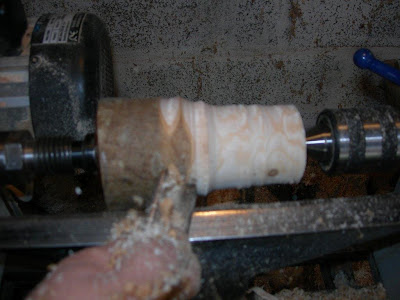Here are pages from the French collector's newspaper - la vie du Collectionneur dated - 30 mai 1997.
(click on picture for larger image)






............"Copyrighted by La Redoute in 1924, the word "tricotin" has become a common noun. This simple object has been in production by different companies for the past 50 years. The origin of the tricotin coincides with the transformation of La Redoute into a catalog company, when, just after World War 1, the big yarn factories of Roubaix were looking for a way of unloading their surplus. The tricotins were sold for 6 francs (old) or else given away to schools, in order to incite a need for yarn. This idea was copied by other factories, department stores, and toy companies. The tail of yarn made by the tricotin was called a chainette. (The lanyards of the 1960s were obviously inspired by the tricotin.)
The form of the tricotin was often human, but sometimes animal, as in the case of the Pingouin yarn company penguin. They were most often made of hand-painted wood, but also came in plaster, pressed board, paper mache, porcelain, terracotta, and plastic. Not coincidentally, when the figures represented by the tricotins were anonymous, they were simple people: the model housewife, the country girl, the spinster, the courageous soldier back from the war. When they weren't anonymous they were still basic popular icons: Guignol (French character puppet from the early 1800s), Pierrot (clown), Charlot (Charlie Chaplin), Becassine (popular French character from children's books) - stereotypes were never far off, with the Black one looking exactly like the Black Banania (image/advertisement on containers of a popular French chocolate and banana flavoured drink), and the Chinese one looking exactly like the Chinese people in the Tintin series of comics by Herge. But, in spite of everything about the tricotin and its origins being simple, common, basic, and stock, what today's collector has to survey is a huge variety of forms, subjects, materials, and styles."..........
Thanks so much to Abby for your help in the translation!



Portrait of a Collector
................."Pierre Christin, a famous painter in Paris, looks for tricotins in the St Ouen flea market with his wife Nicole. He will only pay a few cents for one. 20 years ago he got attracted by the simplicity of them. We used his collection to illustrate our article. For Pierre, an old Hippie, these are Outsider Art (folk art?) because of their interesting simplicity, their naivety, and their diverse expressions revealing a lot about the person who painted them - just like in real art"................

 (click on picture for larger image)
(click on picture for larger image) (click on picture for larger image)
(click on picture for larger image)








































